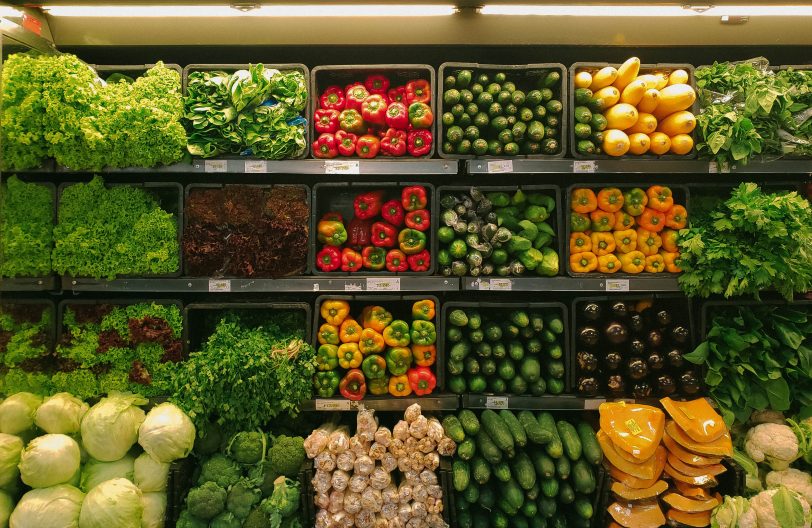Plant-based products have gained significant momentum in the food industry over the past few years. And the surge doesn’t seem to be slowing down anytime soon. A 2021 Ernst & Young report predicts that the global market for plant-based foods will be worth $250 billion by 2035. The plant-based movement also has a strong foothold in both Canada and the United States. More than 40% of the Canadian population is actively trying to incorporate more plant-based foods into their diets, according to the Government of Canada. And in the U.S., plant-based food sales grew almost two times faster (27%) than total U.S. food sales (15%) in 2020. This demand will only continue to rise as companies grapple to secure their share of the market. That’s why we’ve compiled three things you need to know to ensure your product launch is successful. This expertise comes from Maple Leaf Foods’ Sharon Mohammed who spoke at the 2020 North American Food Safety and Regulatory Summit. Sharon is the Director of Corporate, Regulatory Management at Maple Leaf Foods. Greenleaf Foods, a subsidiary of Maple Leaf, is the third-largest plant-based producer in North America.

1. Understand how Regulations differ in Canada and the U.S.
There are similarities and differences in the manufacturing of plant-based foods for Canadian and American markets. Sharon explained that both countries have policy and label enforcement in place but only Canada has guidance material. Some of the regulatory differences include:
- Labelling: Plant-based meat alternatives in Canada must have the word “simulated” on their labels. Whereas in the U.S. this is not mandatory. Sharon believes labelling a product both plant-based and simulated can create confusion for consumers.
- Fortification: Canada is the only country in the world that requires the formulation of vitamins and minerals in plant-based products to match those in meat products. This poses a challenge for Canadian businesses because most of these added vitamins and minerals are synthetically-made. However, modern consumers prefer clean and recognizable ingredients. It also increases operating costs for organizations that produce plant-based products in both the U.S. and Canada. This means they must create two different formulations — one with fortification and one without. And segregation in manufacturing is also necessary, which again increases the cost of production.
Greenleaf continues to challenge these regulations. The organization has been working alongside Health Canada to create equal opportunity for Canadian companies in the plant-based market.
“We're very hopeful that all of these Canadian regulatory agencies, Agri-Food, Health Canada and CFIA, will work together to enable these changes to keep pace with innovation, technology and consumer demands within a global marketplace.” -Sharon Mohammed

2. How to Avoid Cross-Contamination from Meat Sources or Allergens
When using the same equipment to manufacture both meat and plant-based products, Sharon recommends implementing segregation, sanitation and scheduling to ensure there is no cross-contamination. However, you should still enforce these principles even if the production line is solely dedicated to plant-based products. Ensuring safety when producing meat and plant products is very similar to the structure and process used when working with allergens. There are various control measures you can apply, such as ATP monitoring, total plate count micro swabbing, visual changeovers as well as using raw materials, PPE and dedicated lines.
3. How to Identify the Risk Level and Mitigate Hazards
In order to determine micro hazards in plant-based products, you should utilize Hazard Analysis Critical Control Point (HACCP) like you would with any other product. You need to know exactly what’s in your ingredients and raw materials. And what the hazards are in those plant-based proteins. Evaluate the cross-contamination factors at your facility. Identify the hazard, complete the hazard analysis and leverage control measures to reduce those risks and minimize the hazard. The Government of Canada has yet to categorize the risk level of plant-based products, so Sharon maintains that each organization is responsible for determining the risk themselves.
Unsure if you want to dive headfirst into the plant-based market? Why not start with fusion protein products — made up of half meat and half plant-based protein. The advantage from a market share perspective is that fusion products may appeal to consumers who are hesitant to try a plant-based only product. Sharon explained that it creates an avenue or a middle ground to entice new consumers.
The 2021 Food Regulatory and Quality Assurance Summit
Are you interested in learning more about the regulations and labelling requirements for plant-based products? Do you want exclusive insights into how to protect your consumers as well as your brand’s reputation? Join us at North America’s premier summit for strengthening your compliance and quality assurance programs. Save the date — the 2021 Food Regulatory and Quality Assurance Summit is on October 26–27. Meet industry regulators and compliance experts from Kraft Heinz, Loblaws, MUIR Energy, Bevolution Group, Bonté Foods, Nature’s Touch Frozen Foods and many more! Check out our agenda to view confirmed speakers and sessions, or follow us on Twitter for the latest summit announcements, updates and special offers.
You can watch the full session on plant-based products below:



